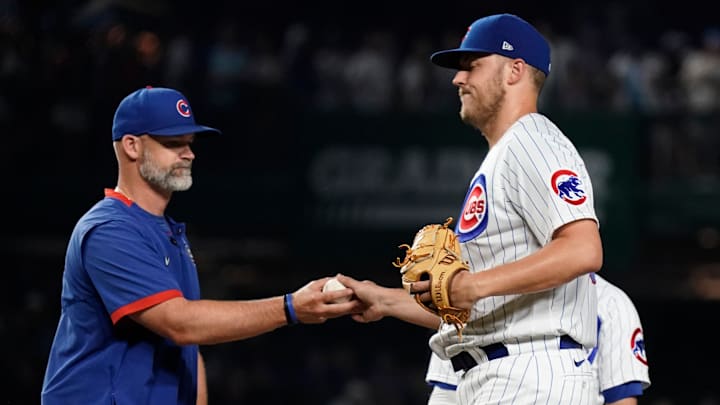The biggest issue when it comes to Jameson Taillon this season has been the early innings - and while you might like to drop that solely in the veteran right-hander's lap, that problem hasn't been unique to Taillon and it's led to the Cubs having to play catch-up on a regular basis.
Monday's disastrous start put Chicago in an early 4-0 hole against a white-hot Brewers team that carried an eight-game winning streak and a four-game lead in the NL Central into the series. Now, those stand at nine and five games, respectively, although the Cubs currently hold the second Wild Card spot in the National League.
If they want to leapfrog Milwaukee and bring home a division crown Taillon - and several other Cubs starters - will need to find a way to settle in earlier in ballgames. The numbers are telling when you look at the staff, as a whole: they've allowed 25 home runs in the first, more than any other inning, and opponents have mustered a .752 OPS in innings 1-3 this year, compared to a .689 mark in innings 4-6 and .692 in the late innings.
Early innings a thorn in the side of Cubs starters Jameson Taillon, Drew Smyly with one month to go in the regular season
For Taillon's part, when he's been bad, you haven't had to wait long to find out. The first batter of a game has a .986 OPS against him this year (league average is .734) - and leadoff hitters in innings clock in well above average with an .811 mark. In the first 25 pitches of his starts, he's allowed a robust .295/.345/.566 slash line. That's just not going to get it done, especially when you're looking up in the standings at a team that's playing as well as the Brewers.
Another issue in the Cubs rotation, at least until very recently, Drew Smyly, has suffered a similar fate in the early innings. The first batter of a game against Smyly this season? A .960 OPS. First time through the order? A .905 clip. He's allowed a .961 OPS in the first inning this year and it's not hard to understand why, looking at those numbers, the lefty is no longer a member of the rotation.
Those numbers look particularly ghastly when you examine Justin Steele and Javier Assad, two bright spots for the Cubs of late. Steele has a .492 OPS allowed in the first inning and Assad has limited opponents to a .188/.254/.344 line in innings 1-3. These guys have collected wildly different results from Taillon and Smyly. Getting off to a good start matters.
Kyle Hendricks hasn't been quite as atrocious as his fellow veterans, but an .813 OPS allowed in the second inning is obviously not great. When he finds his groove, the results get better the deeper he works: innings 1-3: .782 OPS, innings 4-6: .534 OPS.
Obviously, if there were an easy solution here, the Cubs would have already implemented it by this point in the season. Still, there's a little over a month to go in the regular season and David Ross' boys are playing meaningful ball heading into September. If they want to go from playing meaningful games late in the regular season to playing in October, the rotation's early inning performance has to improve.
